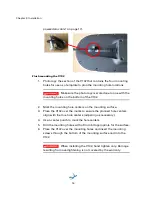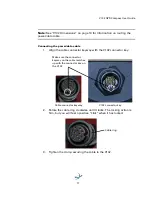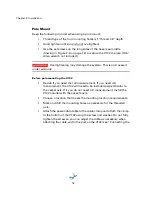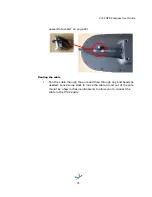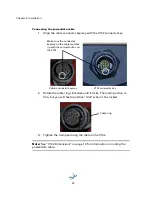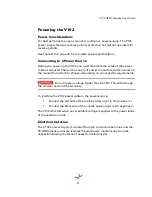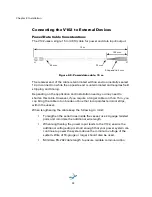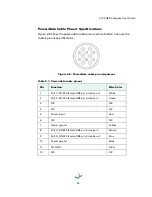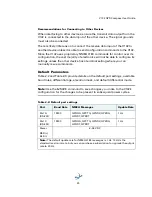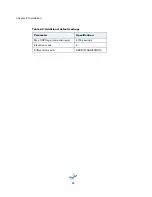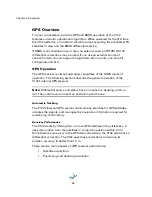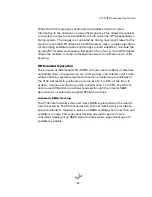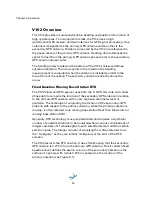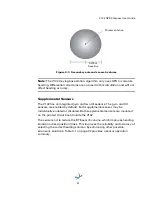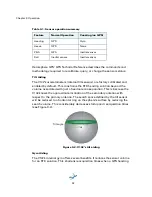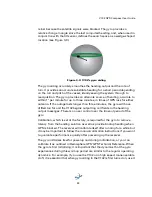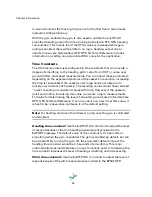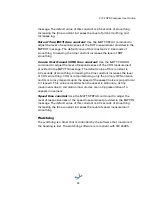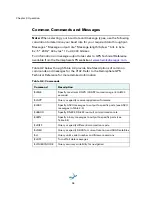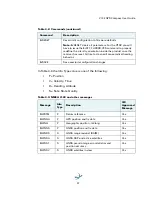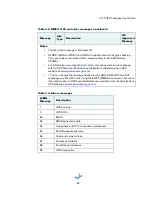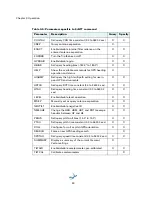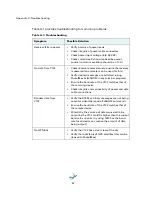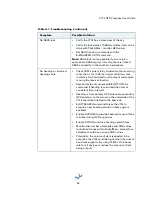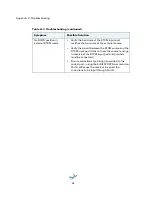
30
Chapter 3: Operation
V102 Overview
The V102 provides accurate and reliable heading and position information at
high update rates. To accomplish this task, the V102 uses a high
performance GPS receiver and two antennas for GPS signal processing. One
antenna is designated as the primary GPS antenna and the other is the
secondary GPS antenna. Positions computed by the V102 are referenced to
the phase center of the primary GPS antenna. Heading data references the
vector formed from the primary GPS antenna phase center to the secondary
GPS antenna phase center.
The heading arrow located on the bottom of the V102 enclosure defines
system orientation. The arrow points in the direction the heading
measurement is computed (when the antenna is installed parallel to the
fore-aft line of the vessel). The secondary antenna is directly above the
arrow.
Fixed Baseline Moving Base Station RTK
The V102’s internal GPS receiver uses both the L1 GPS C/A code and carrier
phase data to compute the location of the secondary GPS antenna in relation
to the primary GPS antenna with a very high sub-centimeter level of
precision. The technique of computing the location of the secondary GPS
antenna with respect to the primary antenna, when the primary antenna is
moving, is often referred to as moving base station Real Time Kinematic (or
moving base station RTK).
Generally, RTK technology is very sophisticated and requires a significant
number of possible solutions to be analyzed where various combinations of
integer numbers of L1 wavelengths to each satellite intersect within a certain
search volume. The integer number of wavelengths is often referred to as
the “ambiguity” as they are initially ambiguous at the start of the RTK
solution.
The V102 restricts the RTK solution. It does this knowing that the secondary
GPS antenna is 0.275 m from the primary GPS antenna. This is called a fixed
baseline and it defines the search volume of the secondary antenna as the
surface of a sphere with radius 0.275 m centered on the location of the
primary antenna (see Figure 3-1).
Summary of Contents for V102 G
Page 1: ...V102 GPS Compass User Guide Part No 875 0276 000 Rev C1 ...
Page 6: ...Chapter 1 Introduction Overview Parts List ...
Page 9: ......
Page 32: ...Chapter 3 Operation GPS Overview V102 Overview Common Commands and Messages ...
Page 46: ...Appendix A Troubleshooting ...
Page 50: ...Appendix B Specifications ...
Page 60: ...www hemispheregps com ...

